01 November 1999:
Now
for the interior
matters.
The floor was first
painted matt black and light gray flocking applied over the wet paint
and
pressed on with fingers, until the flocking looked like dirtied and
worn
out, especially in front of the driver's seat.
|
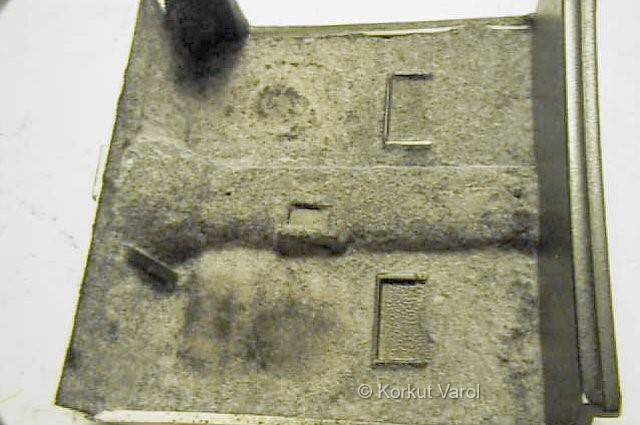
|
02 November 1999:
The
seats were also
treated the same way as the floor. Detail Master flocking was used. |
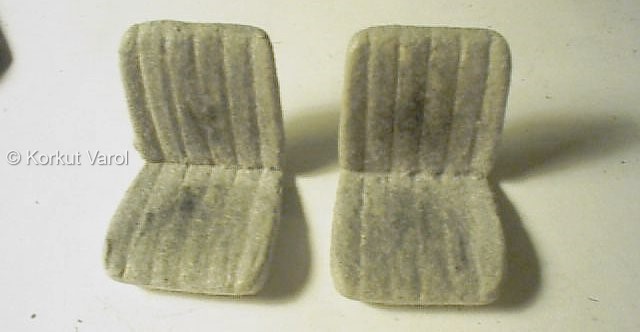
|
07 November 1999:
For
the floorbed,
1.5 mm balsa sheet was cut to bed template and separations between
laminates
were done by removing wood with the backside of a chopped-tip #11 blade.
The
weathering was
done by rubbing the heated tip of a soldering iron over the balsa, and
dropping black and brown paints on the wood, then spreading with
fingertips. |

|
A toolbox was proposed
to rest in front of the right seat. The end of a plastic housing of a
superglue
looked fine for the job, except for the thickness. The thickness at the
edges was reduced as shown.
The pan was painted
matt green and dirtied with drybrushing. The tools were taken from
Detail
Master Interior Junk. |
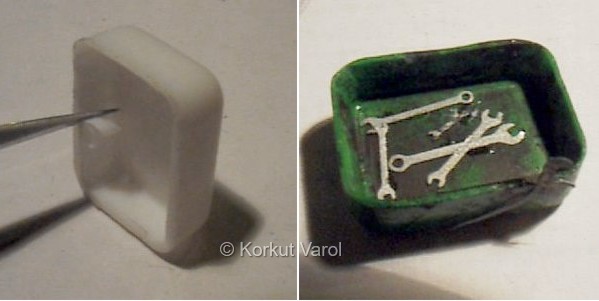
|
09 November 1999:
A
general view of
the messy interior. Some details are on the following pics. The mess
consists
of two dented soda cans (Scale Eqp.), two cassettes, one sunglass, one
six-pack holder, a magazine and the toolbox. |
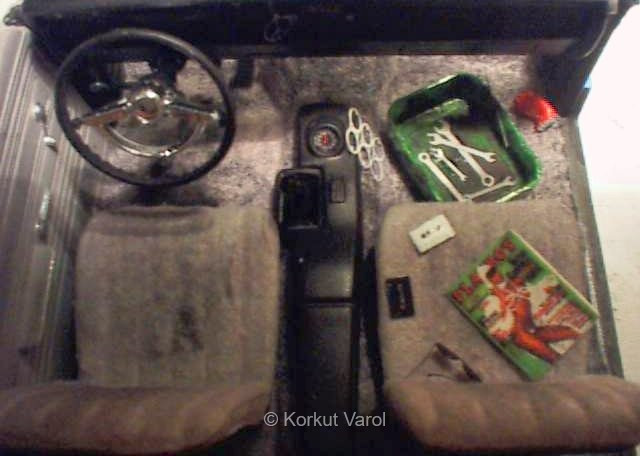
|
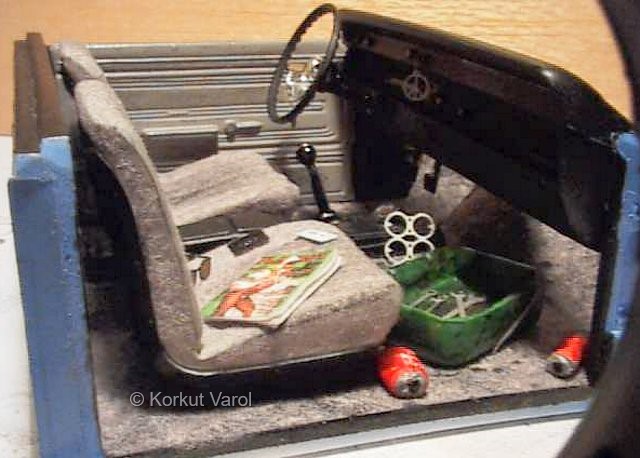 |
| A close-up of the
key and keyholder. |

|
| Close-up of the
right seat. The driver's reading choice was made by computer-printing
the
cover on paper, then pasting it on photographic paper and slicing the
layers
apart with a knife. The edges were also deformed to look like a read
mag. |

|
Now to the junk
at the truck bed...
The
pistons are
from R&D Unique. The connecting rods are bent randomly, and
given a
used effect with matt black drybrushing. The conrods were painted with
gunmetal. |
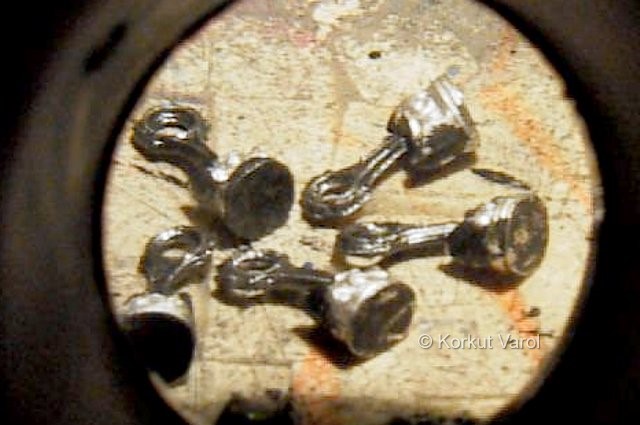
|
| The crankshaft is
also from R&D. It was trimmed, the throws painted with gunmetal
and
polished at the bearings. |
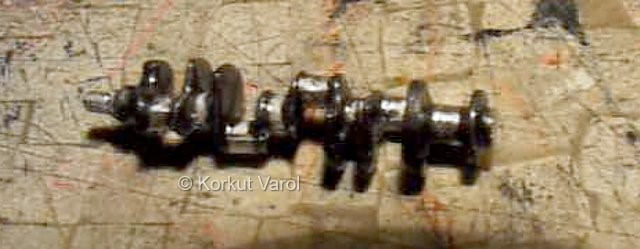
|
| This is the close-up
of the flywheel housing of a Chevrolet tranny from my parts box. It was
separated from the engine, the inside of the housing carved and walls
thinned
with Dremel moto-tool. Inside was painted gunmetal and a gear from a
clock
was put in as the end of the splined shaft. |
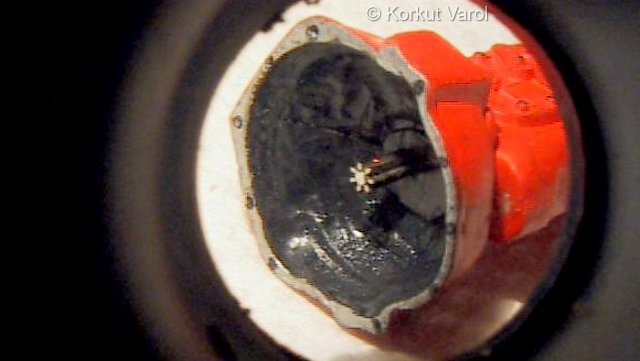
|
17 November 1999:
Then it came to
my mind that the opening right door need not have the internal trim
panel.
So I began searching for the stamped steel panel pics, and thanks to
the
Elky restorers, I found pics in their web sites. So I cut two layers of
styrene sheet and pasted them on one another. |
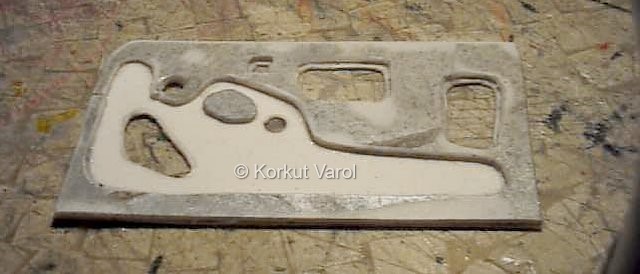
|
18 November 1999:
I
painted the new
panel and glued scratchbuilt door and window handles on. |
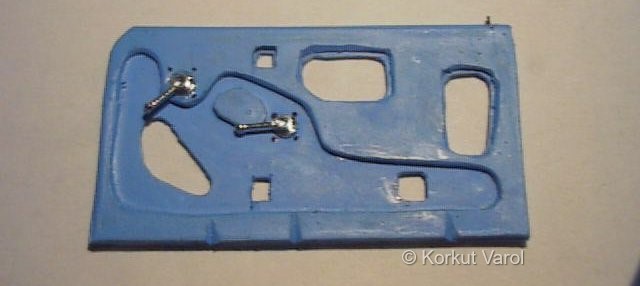
|
| The glass was cut
from acetate sheet and its bottom painted as if it were being held by
the
steel bracket. The glass was glued to the door at this position. |
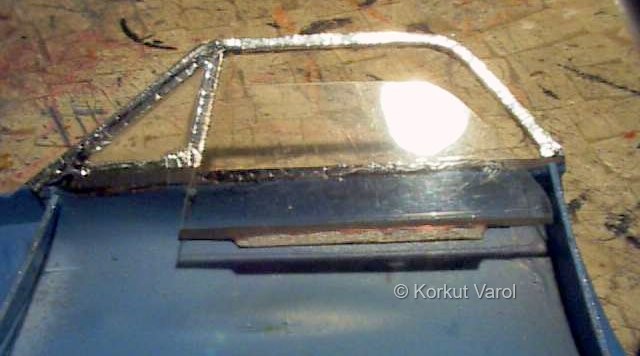
|
19 November 1999:
Now
the inner panel
was glued in place, and door seals made from insulated copper wire
glued
in place with CA glue. Note the door lock pin cut from DM ignition
wire,
with a drop of CA glue at the tip. |
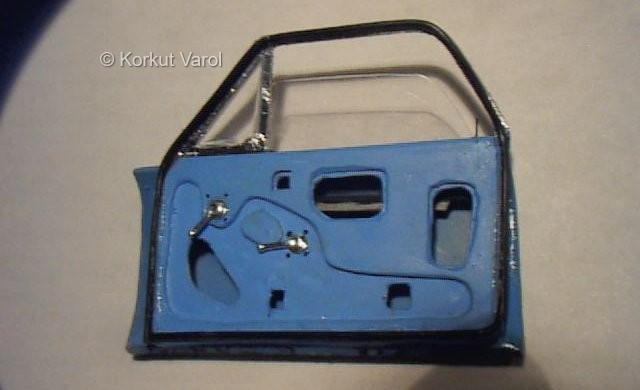
|
| The cage was
constructed from the frames of parts trees. The net was cut from the
mesh
used in wall plastering applications. |
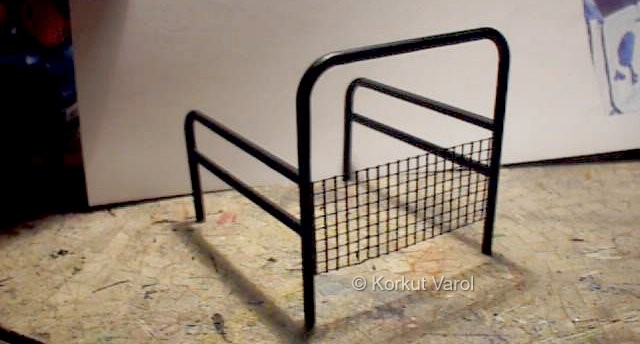
|
|
|
............
|
 
|



